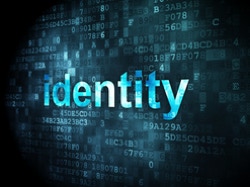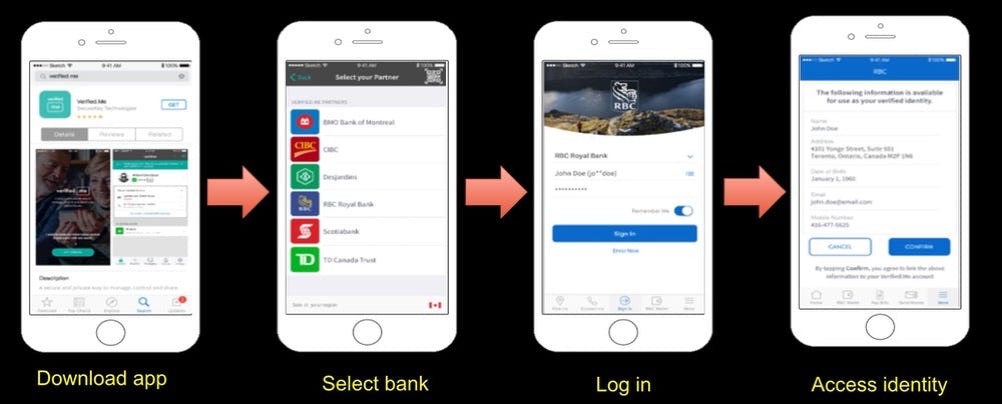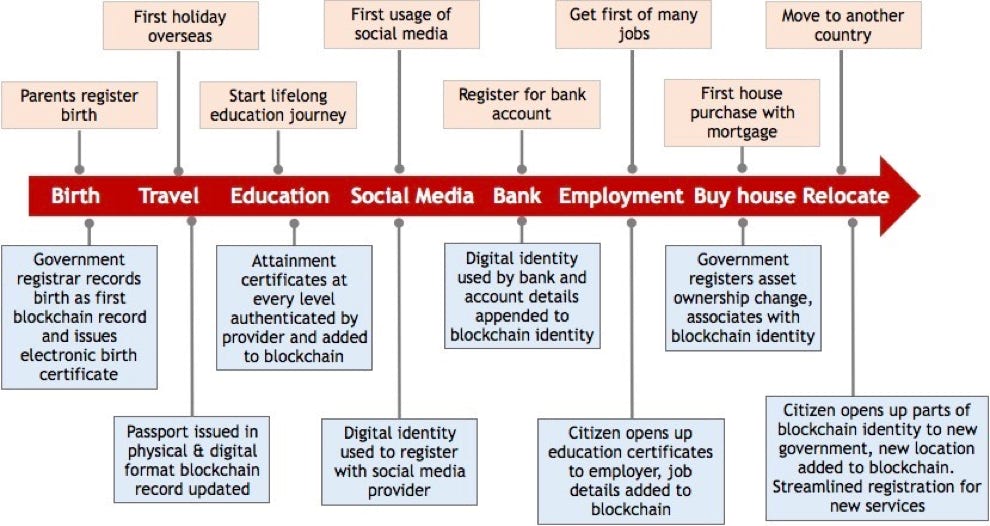
PALFREYMAN
VENTURES
VENTURES
VENTURES
VENTURES
VENTURES
VENTURES
Realising Citizen-centric Identity

Imagining a World Where Losing Your Driving License is no Longer a Nightmare!
Co-authored with Dr. Julia Glidden, IBM Global Government
Digital disruption has changed the way we think about our identity. From Amazon’s ‘tell it once’ payment service through to Facebook’s federated single sign solution, more and more of us are embracing the notion of self-authenticating against a trusted online source of our choosing. Why? For the simple reason that doing so makes our lives easier.
Contrast this trend with government issued identity. From birth certificates and social security cards through to driving licenses and passports they’re all paper based. Many – especially older ones like birth certificates - are often hard to track down and obtain. Meanwhile, losing the physical document itself is often a time consuming, bureaucratic nightmare. Just as bad, who hasn’t shook their head in frustration after being asked to input the same information - name, address, date of birth – over and over again on government forms?
It goes without saying that there’s a growing gap between the demand for Digital Identity, on the one hand, and the limitations of Government issued identity, on the other. Citizens want the ease, convenience and control that self-generated digital identity provides. Similarly, identity consumers - from banks through to government itself - want to make it as quick and easy as possible for people to access their services. At the same time, however, these organisations also need to ensure our data protection and privacy whilst reducing fraud and identity theft – requirements which, thus far, have necessitated Government issued identity.
Enter blockchain – a rapidly emerging technology that addresses the central need for trust, efficiency and security in the identity space.
Blockchain is a technology platform which sits on top of the Internet and makes the exchange of data vastly more efficient through the creation of a distributed ledger (or system of record) that runs across a peer to peer network. In a blockchain, transactions are agreed by appropriate members of the network before being committed into time-ordered “blocks of information.” These blocks are then bound together in a ‘chain’ via privacy services, including cryptographic hashing and consensus algorithms. Finally, a pre-agreed smart contract between network members authorises access over who can see what information by encoding the conditions for access or update, and then automatically executing the event when the conditions are met. The combination of a distributed ledger, privacy controls and smart contract provides total clarity as to who’s done what and when within the blockchain, making it inherently resilient to failure, fraud and cybercrime whilst putting the citizen in control of who can access their identity and when.
But the good news doesn’t stop here. Because a blockchain-based identity is constructed online, it’s also easily transportable. IBM, for example, recently teamed up with Canadian solution vendor SecureKey to build an identity solution on top of the Linux Foundation Hyperledger Blockchain Fabric that enables citizens to establish and register their identity and then control usage through an easy-to-use mobile app:

The two companies then demonstrated this capability in conjunction with the Canadian Government and a network of banks and telecommunications providers. To the surprise of few, they found that the solution benefits all parties. Citizens only need to enter personal information once. After doing so, they can use the smart contract to control access to this information and monitor who’s seen which parts, when and for what purpose. The distributed nature of blockchain ensures that there is no single target for the cybercriminal, whilst the privacy services not only guarantee that information is kept private - even from the network operator – but also empowers citizens to ask to be forgotten and verify that they actually have been.
Meanwhile, a mobile app based blockchain identity enables identity consumers to have the same assurance that a person is who they say they are as a traditional government issued identity without the need for cumbersome paper-based forms, online registries and multiple data entries. At the same time, the Privacy Services and Smart Contract enable them to access just enough information to verify identity without compromising the security and integrity of personal customer data.
But the potential benefits don’t stop there. Once the notion of blockchain Citizen Identity takes off it becomes entirely possible to imagine a world in which a citizen is literally able to build, control and maintain a complete and trusted audit trail of their own life journey - from birth through to death – and can carry it with them on a smart phone. If a citizen chooses, everything from registry of birth through to travel records, educational certificates and employment history can be uploaded to a blockchain, creating a secure, complete and easily accessible digital identity which they can control throughout their lives.

Sound futuristic? It isn’t. Government everywhere can help kick-start the journey by taking a few pragmatic steps to explore the application of blockchain-based identity for their own citizens:
[1] Get to grips with the fundamentals of distributed ledger technology by accessing (free to use) online education: https://developer.ibm.com/blockchain/
[2] Understand how blockchain can build trust in citizen interaction and remove bureaucracratic barriers within government by accessing resources from IBM Institute for Business Value: http://bit.ly/TrustBC
[3] Understand government led consortium building initiatives to address the identity challenge such as the Canadian DIACC: https://diacc.ca
[4] Use Design Thinking to understand the challenges of your specific government: https://www.ibm.com/design/thinking/
[5] Start a small blockchain pilot project to acquire “hands on” experience of the technology’s transformation value: https://www.hyperledger.org/projects/fabric
It’s still early days for blockchain to be sure. And there remains much work to be done to bring our vision of a blockchain-based digital Identity to reality. But one thing is certain: for citizens and businesses to reap the full potential of this transformative technology we need more visionary government around the world have to see the same potential in the identity space as Canada, support networks of their own and exchange best practice. The blockchain Identity train has left the station, as the saying goes. But it won’t stay on track and arrive at the desired destination without continued government leadership and commitment.
11 Nov 2017 at 16:50
jpalfreyman@me.com | @JohnP261